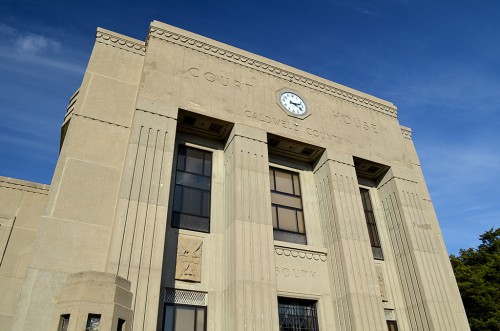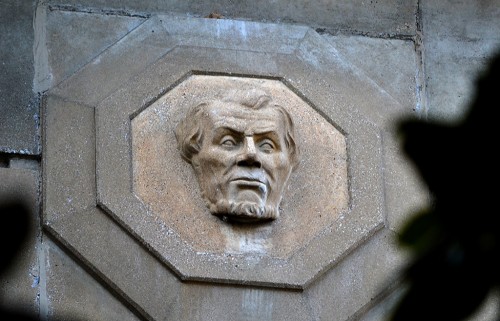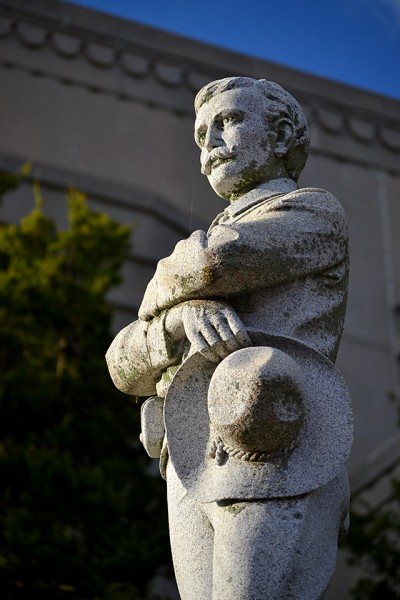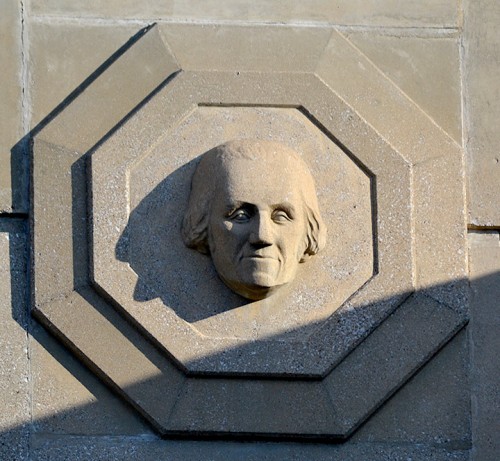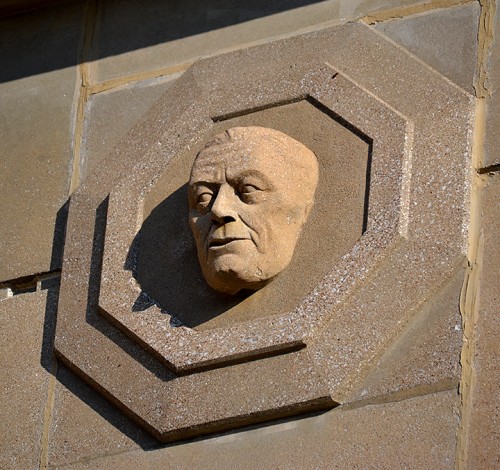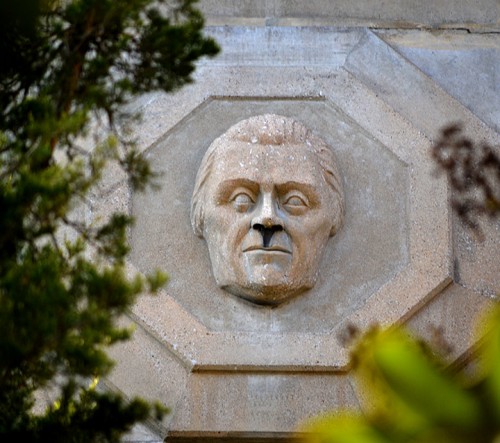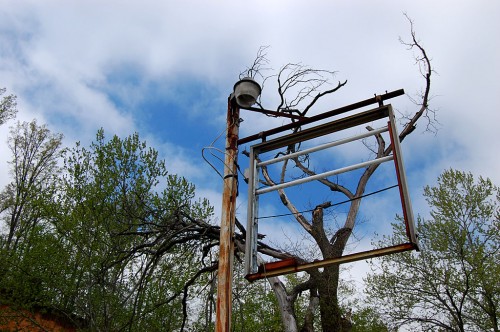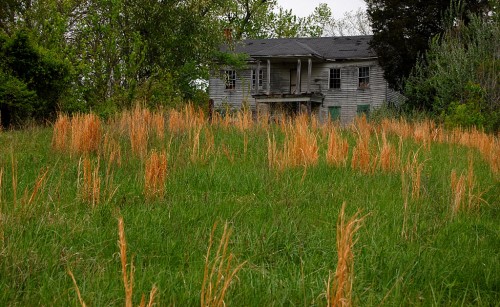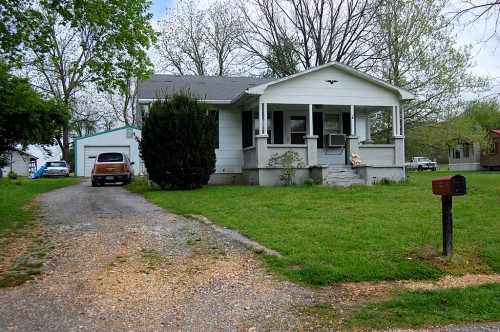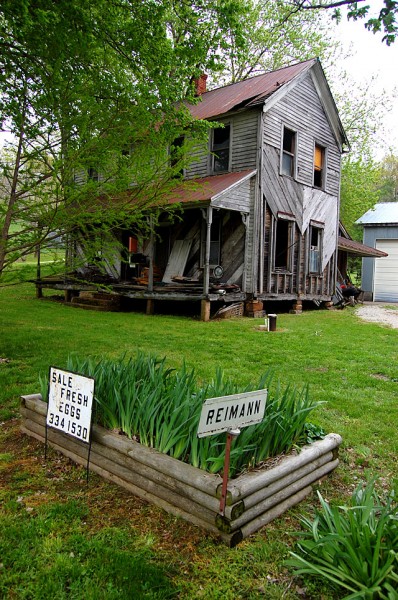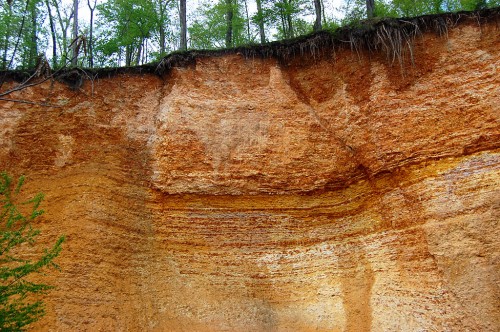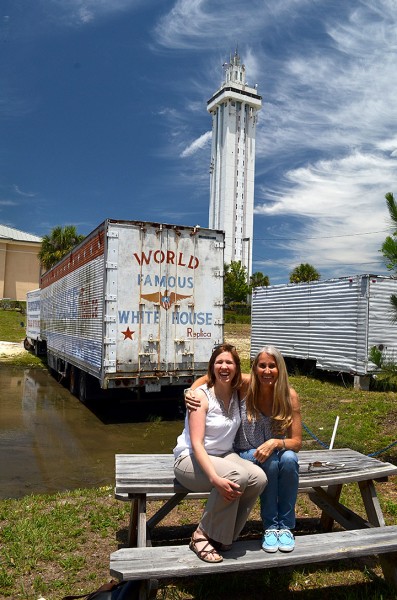 Clermont, with its Citrus Tower and House of the Presidents, has been a stopping point since our family trip in 1960.
Clermont, with its Citrus Tower and House of the Presidents, has been a stopping point since our family trip in 1960.
It was only logical that the Road Warriorettes Curator Jessica and Bike Partner Anne make a pit stop there on the final leg of our trip.
Built in 1955
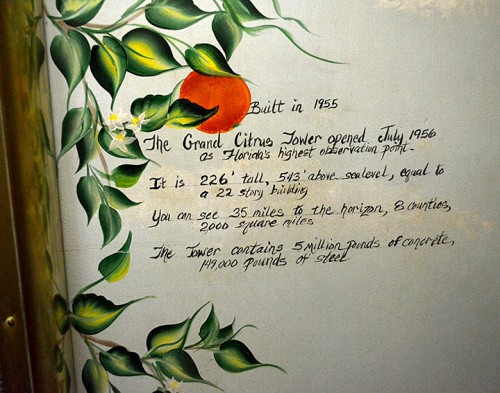 A handwritten note on the elevator wall gave some interesting stats. An elevator ride to the top cost us $6 a head. (If Miz Jessica had slouched a little more so she looked like my granddaughter, we could have gotten her the ride for the $4 kid rate, but she’s too honest. There was no senior discount, because EVERYBODY in Florida is a senior.)
A handwritten note on the elevator wall gave some interesting stats. An elevator ride to the top cost us $6 a head. (If Miz Jessica had slouched a little more so she looked like my granddaughter, we could have gotten her the ride for the $4 kid rate, but she’s too honest. There was no senior discount, because EVERYBODY in Florida is a senior.)
A gazillion citrus trees
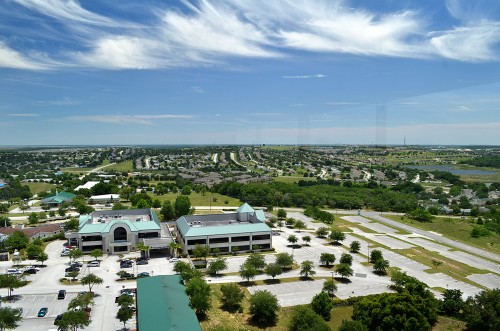 When the Steinhoffs stood atop the tower in 1960, a sign proclaimed that we were looking out over a gazillion citrus trees, and the smell of orange blossoms washed over us.
When the Steinhoffs stood atop the tower in 1960, a sign proclaimed that we were looking out over a gazillion citrus trees, and the smell of orange blossoms washed over us.
When Post reporter Gayle Pallesen and I went up in the tower in 1990 when we were doing a story on U.S. 27 from Little Havana in Miami to Havana, Florida, in the Panhandle, we looked out over a gazillion dead trees killed by a series of disastrous cold fronts that moved through in the ’80s. The only smell was smoke from burning trees that had been bulldozed and piled up.
The landscape today is covered by gazillions of homes and businesses. There is no smell of orange blossoms.
With binoculars or a telephone lens, we could barely make out a square-shaped building on the horizon that we thought was the VAB at Cape Kennedy.
Mineola has been developed nicely
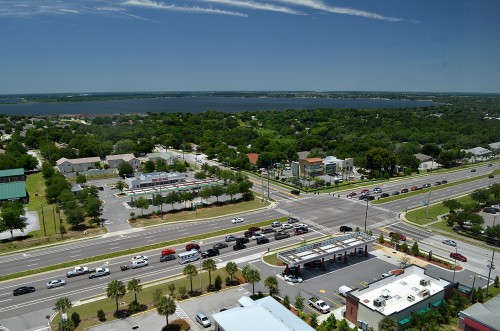 That’s Lake Mineola to the west. A bike trail starting there ties in with the West Orange Trail that goes all the way to Apopka. The development along the lake has done a nice job of integrating the homes into the surrounding hills and making it a very bike / pedestrian / jogger-friendly area. I’d love to sit on one of their porches looking at the sun set over the lake in the evening.
That’s Lake Mineola to the west. A bike trail starting there ties in with the West Orange Trail that goes all the way to Apopka. The development along the lake has done a nice job of integrating the homes into the surrounding hills and making it a very bike / pedestrian / jogger-friendly area. I’d love to sit on one of their porches looking at the sun set over the lake in the evening.
Click on the photos to make them larger.
A little green left
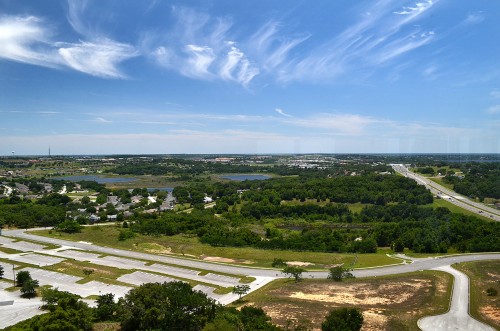 There’s still a little green left to the south. The highway is U.S. 27, which was once the main path to South Florida from the Midwest before I-95 and the Florida Turnpike were built.
There’s still a little green left to the south. The highway is U.S. 27, which was once the main path to South Florida from the Midwest before I-95 and the Florida Turnpike were built.
The Penny Drop
 I told Curator Jessica that I’d spot her a penny to drop over the edge.
I told Curator Jessica that I’d spot her a penny to drop over the edge.
“I can’t do that, it might kill someone,” she protested. [She, obviously, hasn’t read the debunking of the penny-dropped-from-the-Empire-State-Building urban legend.)
She and Anne took turns dropping coins down a conduit that goes all the way to the base of the tower. With their ears to pipes on the side of the box, they could hear it spin and ding all the way down. It doesn’t take much to amuse them.
House of Presidents
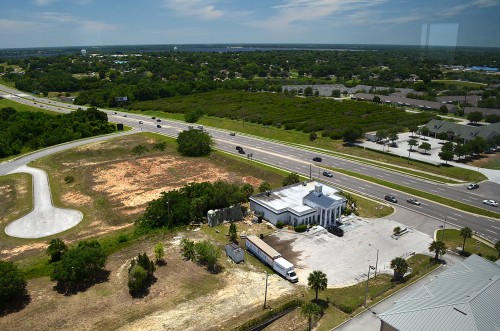 Southwest of the tower is a large white building looking a little worse for the wear, which is to be expected, because it was here in 1960.
Southwest of the tower is a large white building looking a little worse for the wear, which is to be expected, because it was here in 1960.
Its website calls it the The Presidents Hall of Fame, but the sign on the front of the building still says House of Presidents. I recalled the tickets were a bit pricy, so we opted to stay on the outside.
“Like a 70’s porn star”
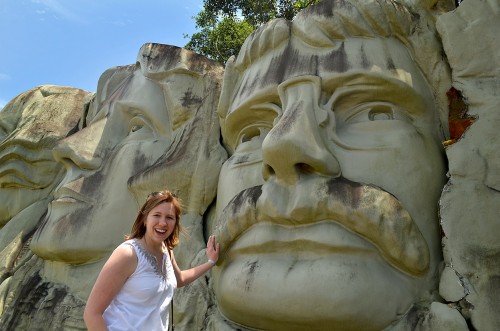 I photographed Anne with Washington and Lincoln behind the wax museum when we passed through in 2013. Miz Jessica, though, made a beeline for Theodore Roosevelt.
I photographed Anne with Washington and Lincoln behind the wax museum when we passed through in 2013. Miz Jessica, though, made a beeline for Theodore Roosevelt.
“He looks like a 70’s porn star,” she remarked. I wisely opted not to ask about her expertise in that area. I’m sure her interest was purely academic.
She enjoys making period costumes, so Anne and I were edified about the benefits of crotchless pantaloons and why the cancan was such a scandalous dance. Between Jessica and Anne, who wrote Kiss and Tell: Secrets of Sexual Desire from Women 15 to 97, this Missouri boy got quite an education on our road trip.

